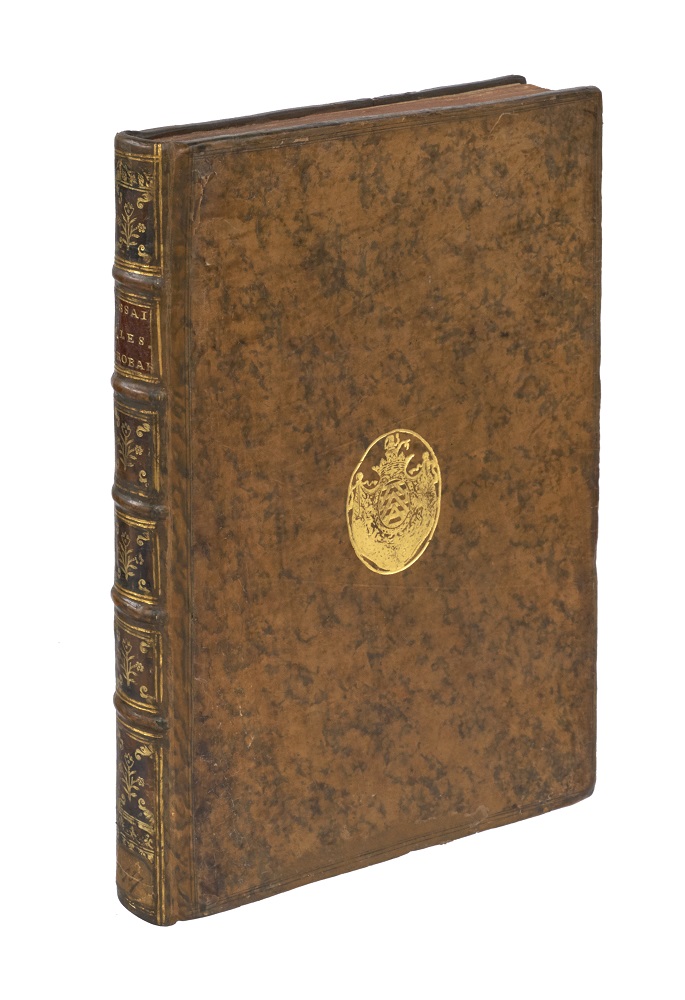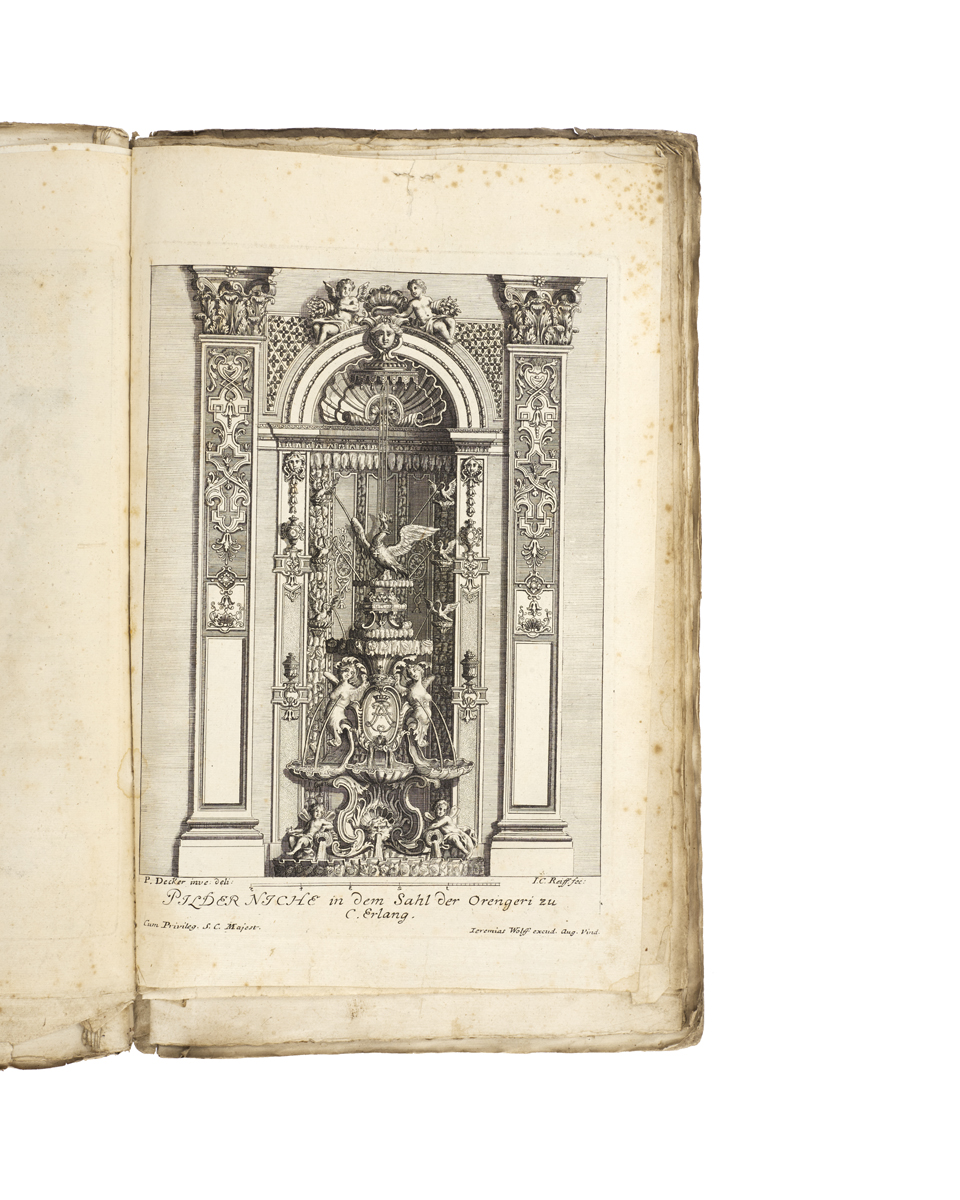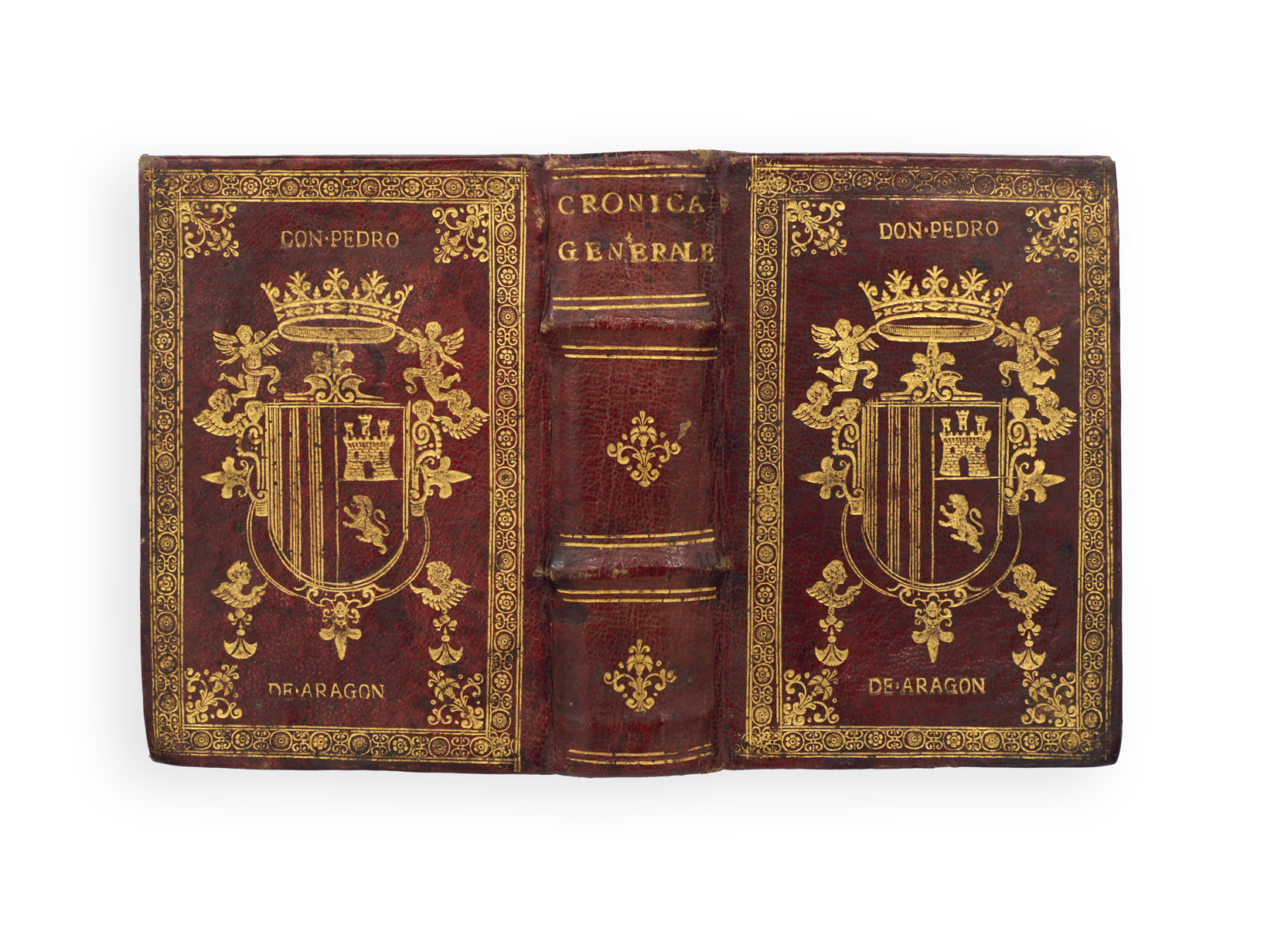
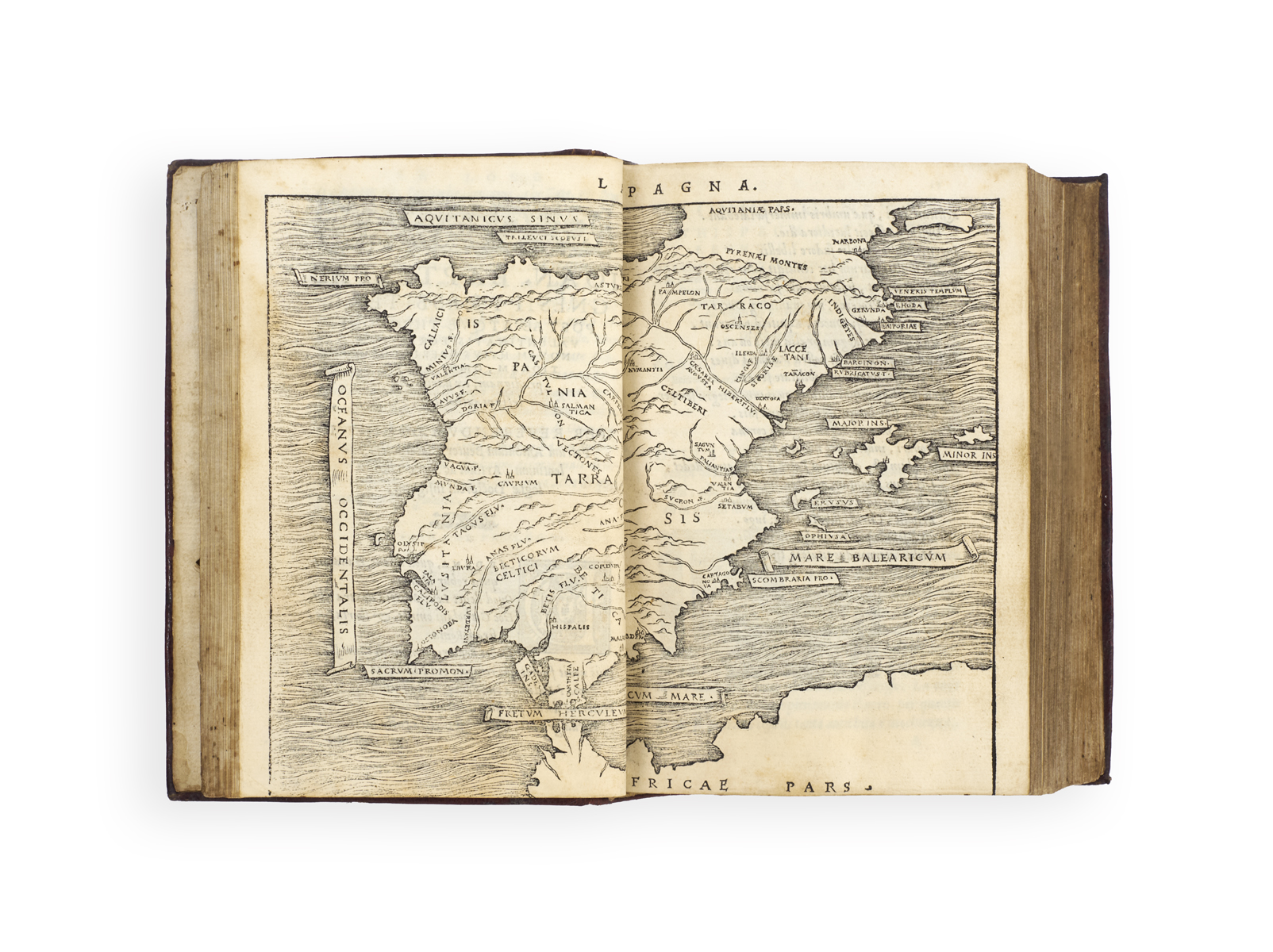
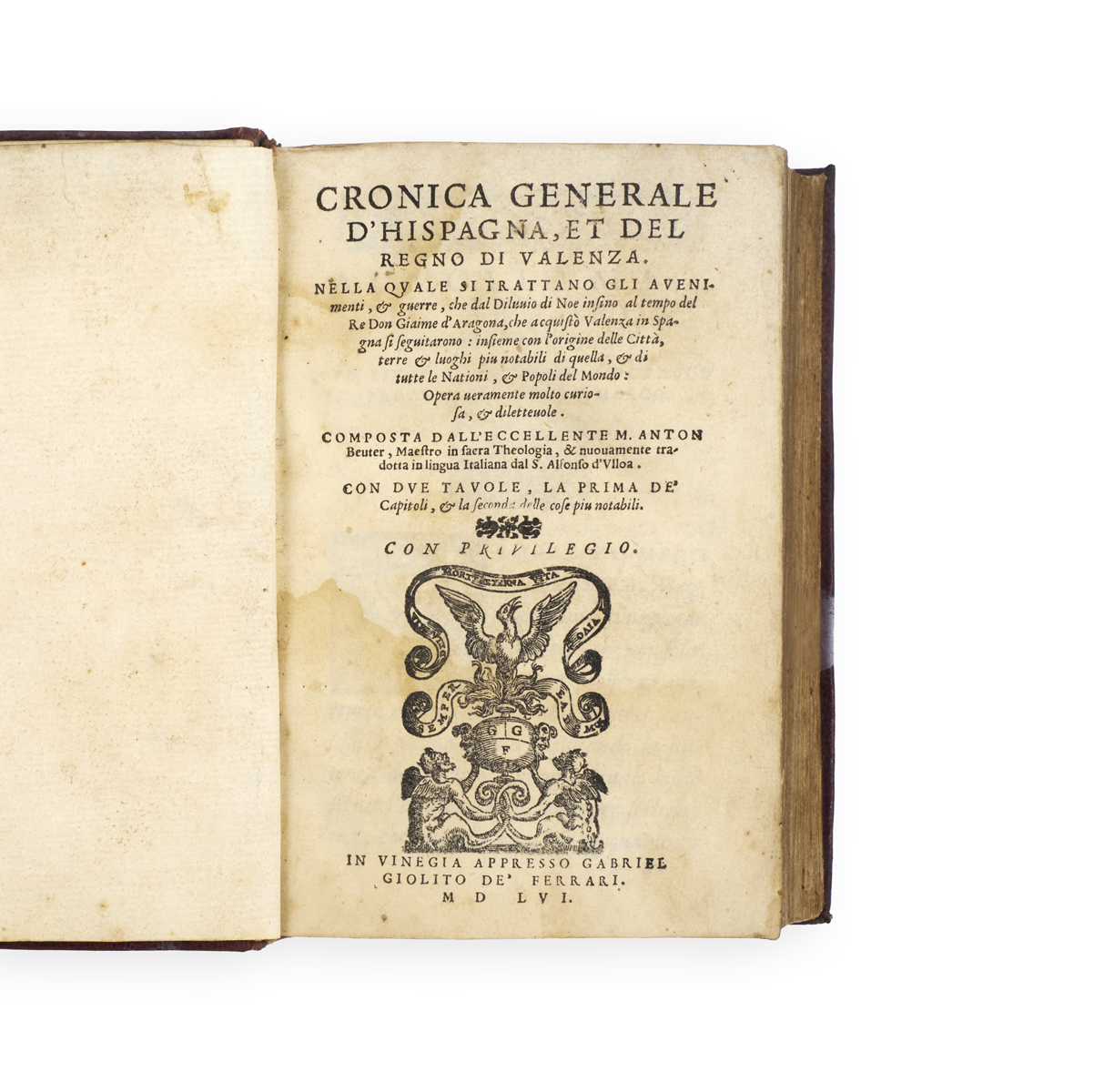

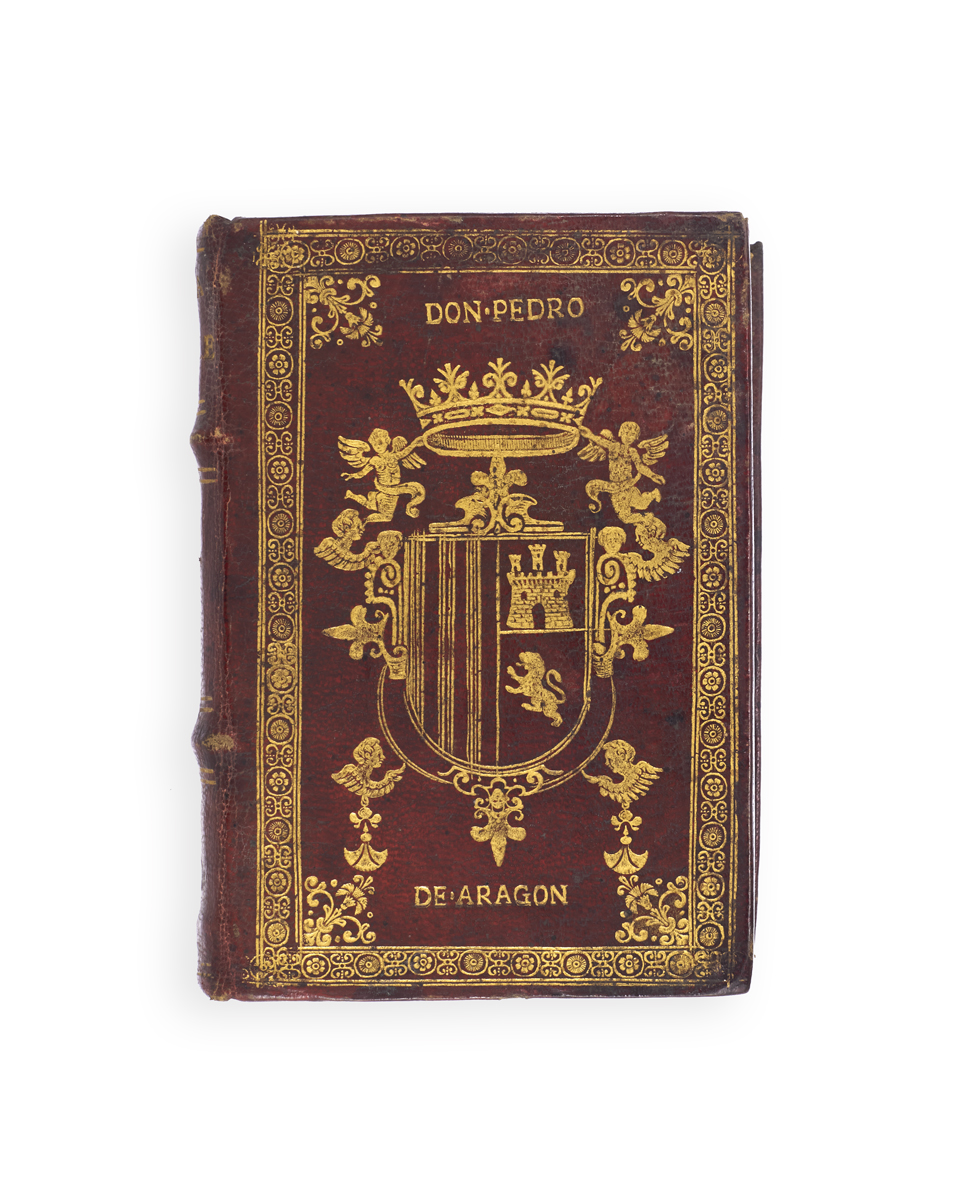
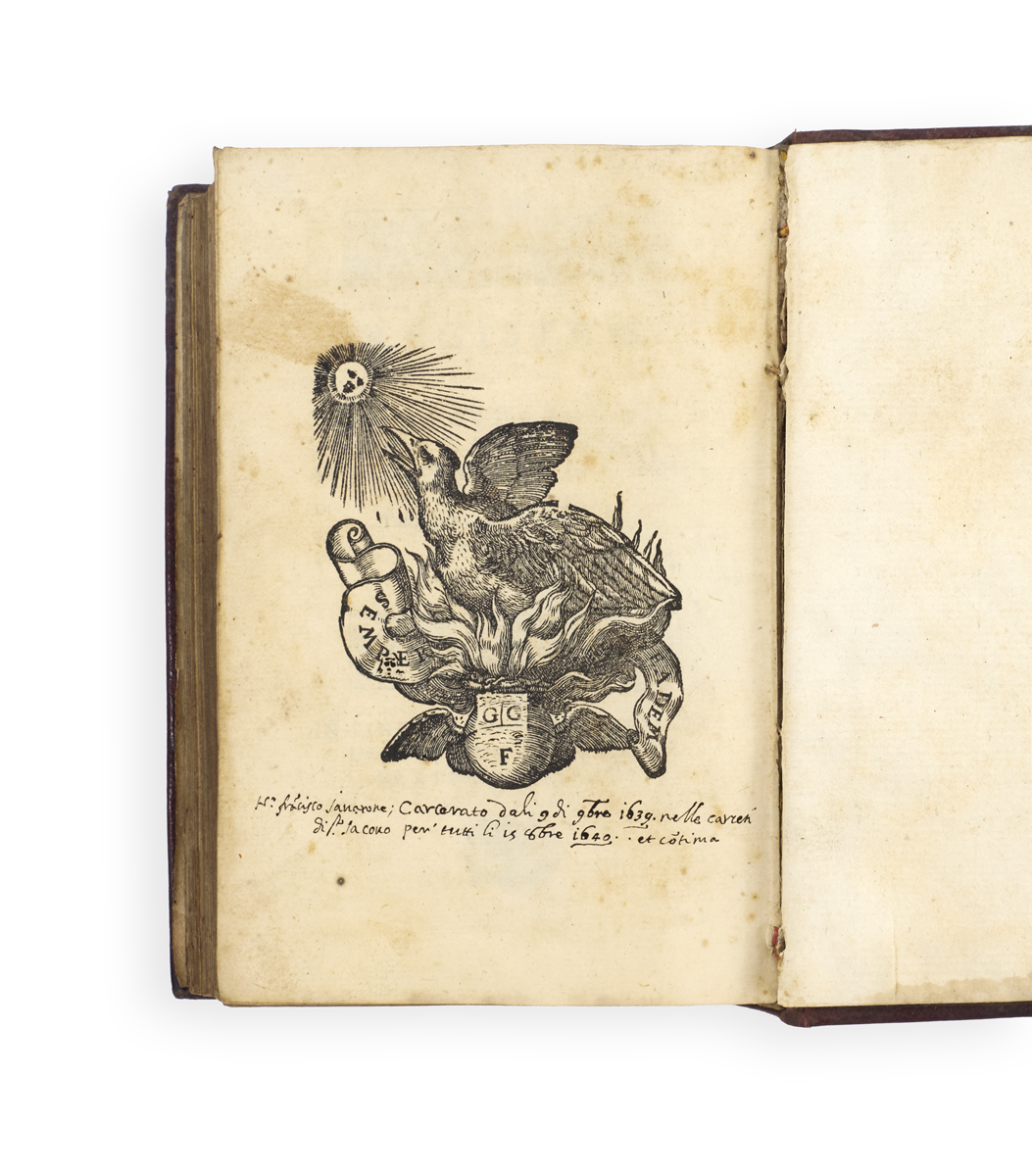
WITH PROVENANCE FROM A PRISONER TO A PILFERER
BEUTER, Pere Antoni (or Pedro Antonio); Alfonso de ULLOA, translator.
Cronica generale d’Hispagna, et del regno di Valenza … con due tavole.
Venice, Gabriel Giolito de’ Ferrari, 1556.
8vo, pp. [lxxvi], 533, [3]; woodcut Giolito phoenix device to title-page (CNCM 26) and final leaf verso (CNCM 2688), historiated 5- and 7-line woodcut initials, double-page woodcut map in text (pp. [lxxiv-lxxv]); variable marginal dampstaining and foxing, small oilstain to pp. 77-83 not affecting legibility; withal a handsome copy bound in seventeenth-century red morocco for Don Pedro de Aragon with his arms gilt à petits fers and ‘DON · PEDRO / DE · ARAGON’ lettered in gilt to both boards (see below), borders roll-tooled in gilt, spine gilt in compartments and lettered directly in gilt, edges gilt, marbled pastedowns; very slightly rubbed, a few small marks; ink inscription ‘Fra[n]cisco ?Ianarone Carcerato dali 9 di 9bre 1639 nelle carceri di S. Iacono per’ tutti li 15 8bre 1640 … et co[n]tinua’ to final leaf verso, eighteenth-century shelfmark to front free endpaper, nineteenth-century bookseller’s label of Llordachs, Barcelona, and armorial bookplate of Feliciano Ramirez de Arellano to front pastedown, twentieth-century catalogue card loosely inserted.

Added to your basket:
Cronica generale d’Hispagna, et del regno di Valenza … con due tavole.
First and only Italian edition of the first part of Beuter’s history of Spain and Valencia from the Great Flood to James I the Conqueror, handsomely bound for Don Pedro Antonio de Aragon.
First published in Valencia in 1538 as Primera part de la historia de Valencia, Beuter’s (1490–1554) chronicle was expanded in 1546 to extend to all of Spain, and a second part was published in 1551. The present edition was translated by Alfonso de Ulloa (1529–1570), a Spanish expatriate living in Venice who translated several Spanish works into Italian for Giolito, as well as for Valgrisi and Sessa; he died in prison whilst serving a life sentence for falsifying a licence from the Council of Ten for a book printed in Hebrew.
Provenance:
1. The final leaf is inscribed ‘Francisco ?Ianarone, imprisoned from 9 September 1639 to 15 October 1640 in the prison of S. ?Jacono’ (trans.).
2. Our copy has been handsomely bound for Don Pedro Antonio de Aragon (1611–1690), Duke of Segorbe and Cardona, ambassador in Rome from 1664 to ’66 and Viceroy of Naples from 1665 to ’71. He amassed a substantial private library during his time in Italy and in 1677 bequeathed some 3600 volumes to the Poblet Abbey, of which he was a patron, in order to secure a burial plot. His library is known primarily for his striking armorial bindings and for the nefarious means by which he acquired his books as viceroy: Giulio Cesare Isolani, a Neapolitan contemporary, bitterly complained in 1672 that Don Pedro’s library was ‘a violent collection … designed by fraud and formed by theft’ (Apologia, p. 128, trans.). Indeed, much of his collection comes from the remains of the library of Alfonso V of Aragon in Naples, and other books were acquired in return for official favours or ‘from bookshops that had been sold off due to the death of their owners’ (Bordona, p. 39, trans.). The Poblet library was dispersed in the mid-nineteenth century as a result of the Spanish Confiscation Laws. For his library bindings, cf. Christie’s, 8 July 2005, lot 30.
3. Nineteenth-century bookseller’s ticket of Llordachs in Barcelona.
4. Armorial bookplate of judge and politician Feliciano Ramirez de Arellano, Marquis of Fuensanta del Valle (1826–1896). In 1871 he published a Colección de libros españoles raros ó curiosos.
5. Fine bindings sale of Count Alfred Maria Fortunatus von Oberndorff (1870–1963), Sotheby’s, 6 July 1955, lot 28, £15 to Edwards.
BM STC Italian, p. 91; EDIT16 5679; USTC 814339; Index Aureliensis IV, p. 154; not in Adams. See Bordona, ‘La biblioteca del virrey Don Pedro Antonio de Aragón (1611–1690)', in Boletín Arqueológico 4:2 (1948), pp. 37-53.
